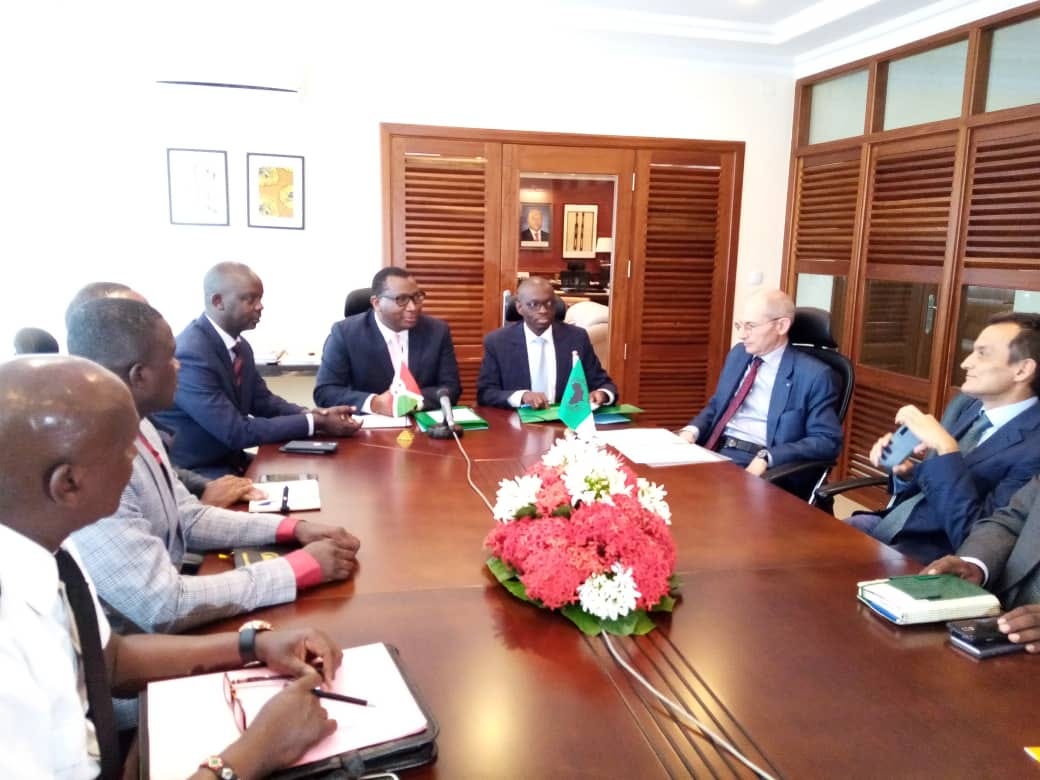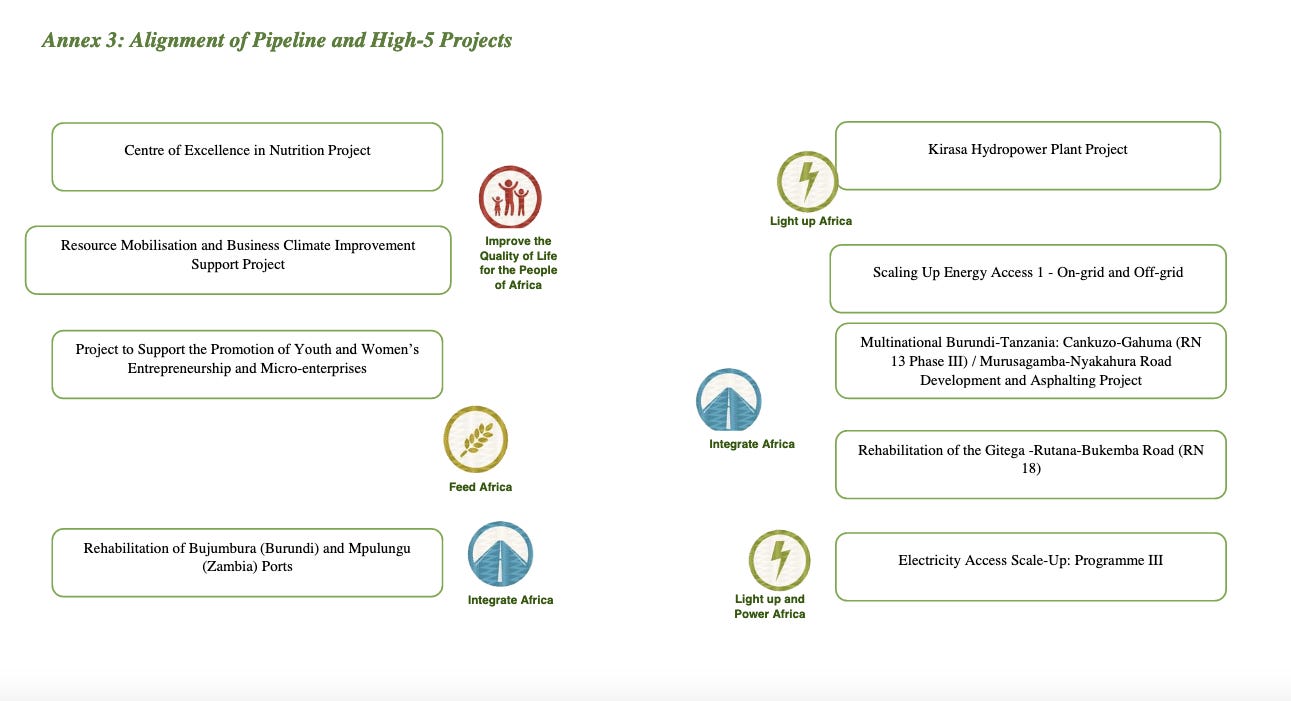What you should know about the Bujumbura Port rehabilitation project
The briefing, Issue #41, Tuesday, February 18

Dear Readers
This Tuesday, the Burundi Ministers in charge of Finance and Transport signed a memorandum of understanding with the African Development Bank (AfDB) Group for the financing of the Project of the Department of Transport Corridor on Lake Tanganyika, Phase I: The rehabilitation of Bujumbura Port.
The rehabilitation of the Bujumbura Port will reduce import/export costs by about 30%; improve the service level and productivity by reducing port of call times for vessels and by increasing the capacity of terminals.
This phase will allow the development of economic opportunities and an entrepreneurial network along Bujumbura Port; and about a 20% increase in cross-border trade with countries bordering the Lake.
A 2016 basic development study of the Bujumbura Port conducted by ARTELIA a French design firm specializing in engineering, predicts that traffic at Bujumbura Port will reach nearly 600,000 tonnes in 2030. The traffic was estimated at 104,900 tonnes in 2015 and it is expected to reach 296,100 tonnes in 2020 and 462,900 tonnes in 2025.
The Bujumbura Port was built in the 1950s. It is the first port of Lake Tanganyika in front of the port of Mpulungu in Zambia, that of Kalemie in the Democratic Republic of Congo and that of Kigoma in Tanzania.

Source: The Study of Master Plan for Port Sector in the Republic of BurundiFinal Report(Summary)
The Bujumbura Port is situated at the north-eastern tip of the lake. The port lies between the industrial zone and the central business district of Bujumbura. The port is operated by a private company (Global Port Services Burundi), in which the Government of Burundi has a 9 percent share, under a concession agreement with the Burundi Maritime, Port and Railway Authority (AMPF).
Initial port development consisted of the construction of a piled pier of some 200 meters in length, which together with a rubble mounded breakwater (the southern breakwater), which now forms the entrance to a dredged basin within which the port facilities are located. The inner port basin has an area of approximately 32,000 m2, with a quay of 375 meters in length on the southern edge.

The Lake Tanganyika Transport Corridor Development Project will boost regional integration and significantly reduce trade costs between riparian countries (Burundi, DRC, Tanzania, and Zambia).
Multimodal links with Central Corridor roads and railways will provide greater transport connectivity with other countries in the sub-region, such as Uganda and Rwanda.
The project will, therefore, unlock Lake Tanganyika’s potential as an inland waterway and provide a platform that would link the Northern (Mombasa in Kenya), Central (Dar-es-Salaam in Tanzania) and Southern (Mpulungu in Zambia/ Durban in South Africa) Road Corridors.
Given its geostrategic location, it has significant economic potential, fostering trade in a wide range of agricultural and fishery products and building materials. Bujumbura (Burundi) and Mpulungu (Zambia) ports, as well as Kigoma (Tanzania) and Kalemia (DRC) ports, are some of the main ports of Lake Tanganyika.
The project has five (5) components:
Rehabilitation of Bujumbura Port and Access Roads;
Port Facilities;
Institutional Support and Capacity Building;
Trade and Transport Facilitation; and
Project Management.
The implementation of Phase I activities of the project will be spread over a period of 5 years from January 2020 to December 2024, with an estimated total cost of UA 36.79 million exclusive of custom duty and tax, comprising:
UA 14.07 million by ADF (African Development Fund);
UA 4.94 million by TSF( Transition Support Facility)
UA 16.02 million by the EU (European Union)
UA 1.76 million as the Government’s counterpart contribution.
UA 1 = BIF2,537.77
UA (Unit of Account) is the official currency for the AfDB projects. 1 UA=1 SDR (International Monetary Fund Special Drawing Rights) = USD 1.34

Source: Country Strategy Paper 2019-2023 (CSP 2019-2023)
The Bank's active portfolio in Burundi by the end of 2019 comprised fifteen (15) public sector operations, totaling about UA 227.956 million. The operations-concentrated sectors are:
Transport (60.6%),
Energy (32.9%),
Agriculture (4.8%),
Multi-sector (1.2%)
Social (0.4%).
This situation reflects the Bank's strategic choices for the country for the 2012-2016 period, which was extended to 2018, focusing on governance and infrastructure improvement.
An analysis of the portfolio's performance shows a relatively satisfactory disbursement rate of about 35.42%, for an overall average age of about three (3.83) years.
Up to the end of September 2019, 40% of the portfolio was deemed to be performing well, 40% required proactive measures to avoid them being considered non-performing, and only 20% was deemed non-performing (one project in the energy and institutional support sector).
READ ALSO: AfDB grants support to kickstart a 9-MW solar and hydropower hybrid project in Burundi.
Burundi has been a member of the African Development Bank (AfDB) Group since the group was founded in 1964. AfDB grant and loan operations with the country were interrupted by the outbreak of civil strife in 1993.
On July 19, 2004, the AfDB Boards approved general policy guidelines to help post-conflict countries clear their arrears and created a facility, the Post-Conflict Country Facility, initially funded with about SDR 100 million in AfDB funds, to provide financial assistance to qualifying countries. The policy guidelines call for a three-way burden-sharing formula among the country, donors, and the Post-Conflict Country Facility.
On October 27, 2004, the AfDB Boards endorsed an arrears clearance proposal for Burundi whereby the balance of arrears was settled with the help of donors and the Post-Conflict Country Facility before the decision point for the enhanced Highly Indebted Poor Countries Initiative.
Established in 1964, the African Development Bank (AfDB) is Africa’s premier development finance institution. Its mission is to help to reduce poverty and improve the living conditions on the continent. The African Development Bank Group comprises three entities: the African Development Bank (AfDB), the African Development Fund (ADF) and the Nigeria Trust Fund (NTF).
Fabrice Iranzi
Founding Editor, RegionWeek.com
Notes & Ressources:
http://siteresources.worldbank.org/INTBURUNDI/Resources/BI-SECTEURDESTRANSPORTS.pdf
https://www.afdb.org/en/projects-and-operations/project-portfolio
http://open_jicareport.jica.go.jp/pdf/12082491.pdf
IN THE REGION
3 traders were arrested in Nairobi yesterday using banned plastic bags. About 500 pieces of the bags were seized. The trio was presented in court today. According to Section 144 of EMCA, any person using banned bags is liable to 2-4 million fine or imprisonment of 1-4 years (The National Environment Management Authority)
Uganda handed over 13 Rwandan detainees to Rwanda as a sign of commitment to implement the agreement that was signed in August in Luanda, Angola to ease tensions between Uganda and Rwanda. This is in addition to the nine Rwandans who were released last month. According to Uganda’s Foreign Minister, Mr. Sam Kutesa, the gesture was an option the government has chosen in order to facilitate the normalization of relations in the context of the Luanda process. (Daily Monitor)
East Africa Community Condolence message on the death of more than 1,000 people from Coronavirus
The worst locust outbreak that parts of East Africa have seen in 70 years has reached South Sudan, a country where roughly half the population already faces hunger after years of civil war, officials announced Tuesday. Around 2,000 locusts were spotted inside the country, Agriculture Minister Onyoti Adigo told reporters. Authorities will try to control the outbreak, he added.(AP)
What did you like? What do you want to see here? Let us know at editor@regionweek.com
RegionWeek is a Burundi-based media for a new generation of achievers in Africa, a platform devoted to chronicling the journey to Freedom and Empowerment.



